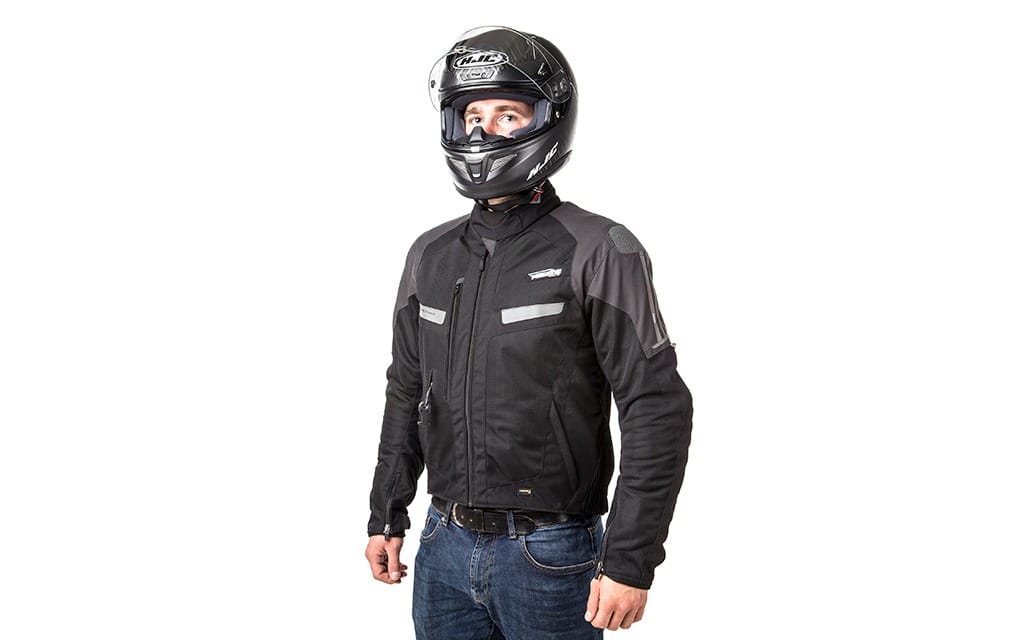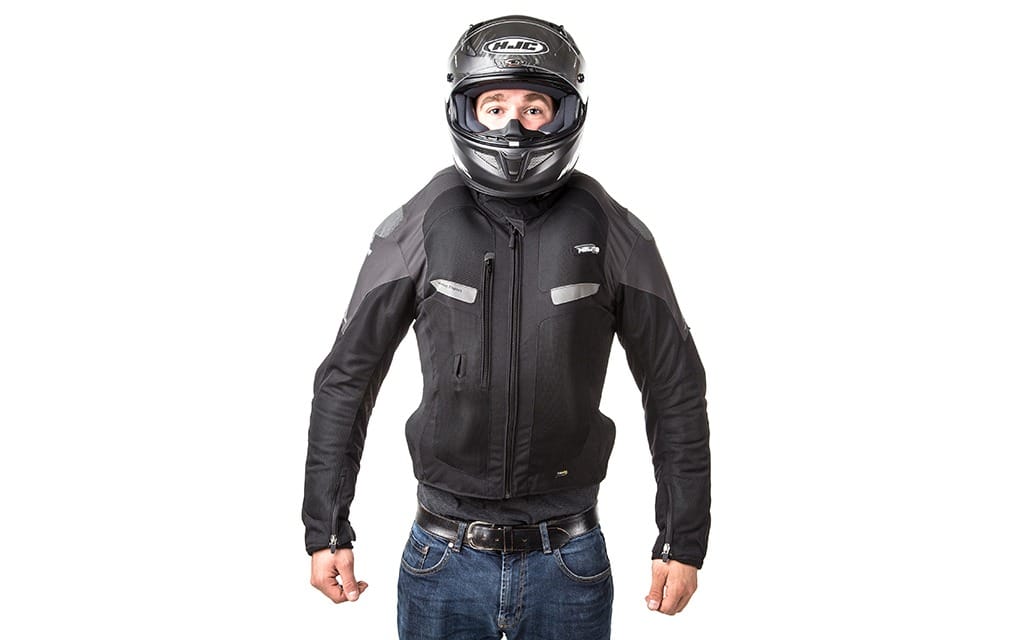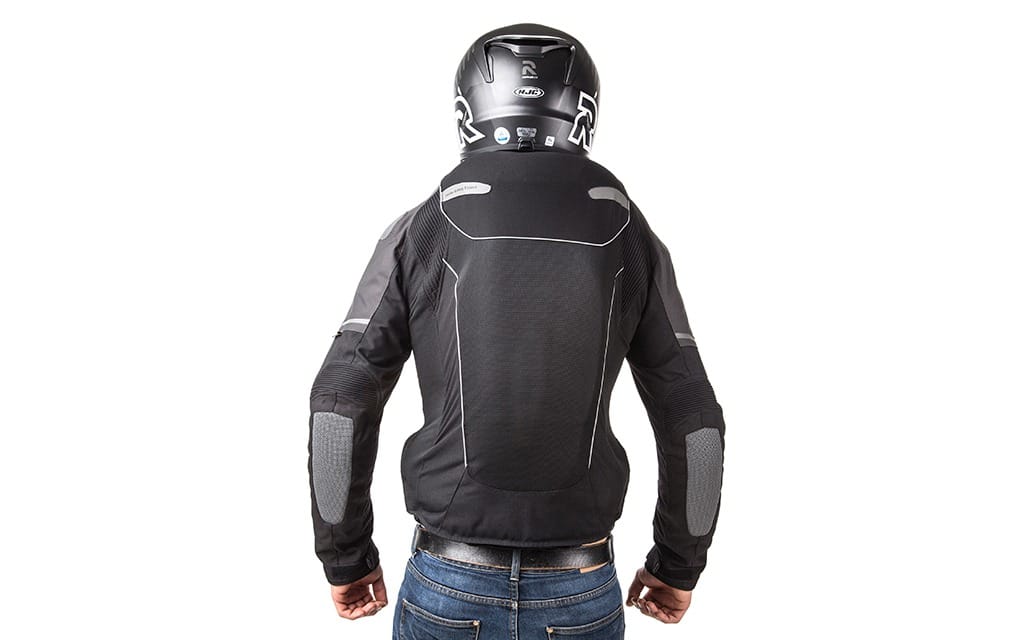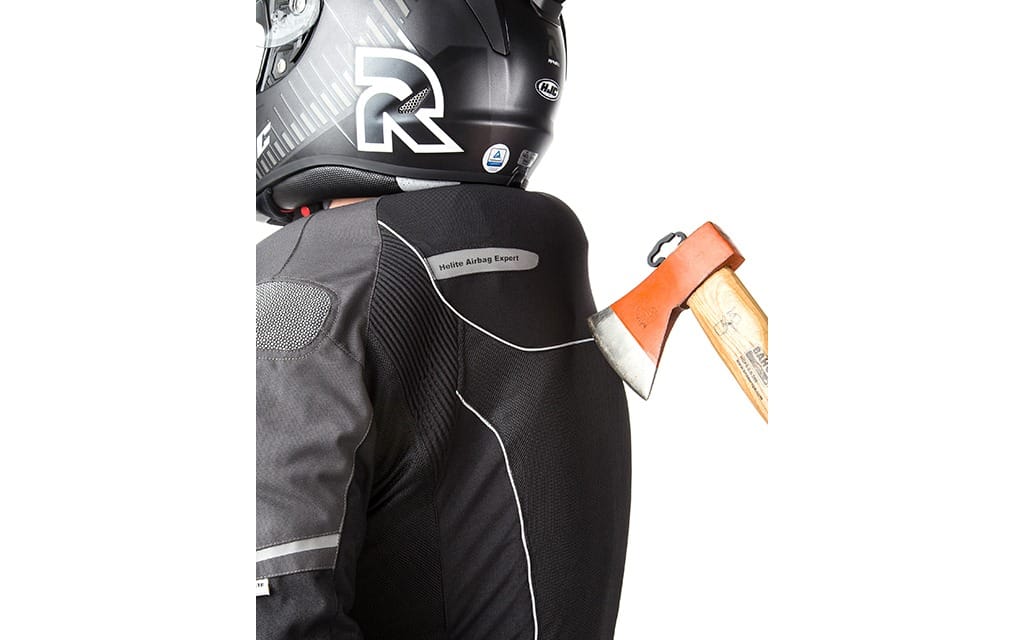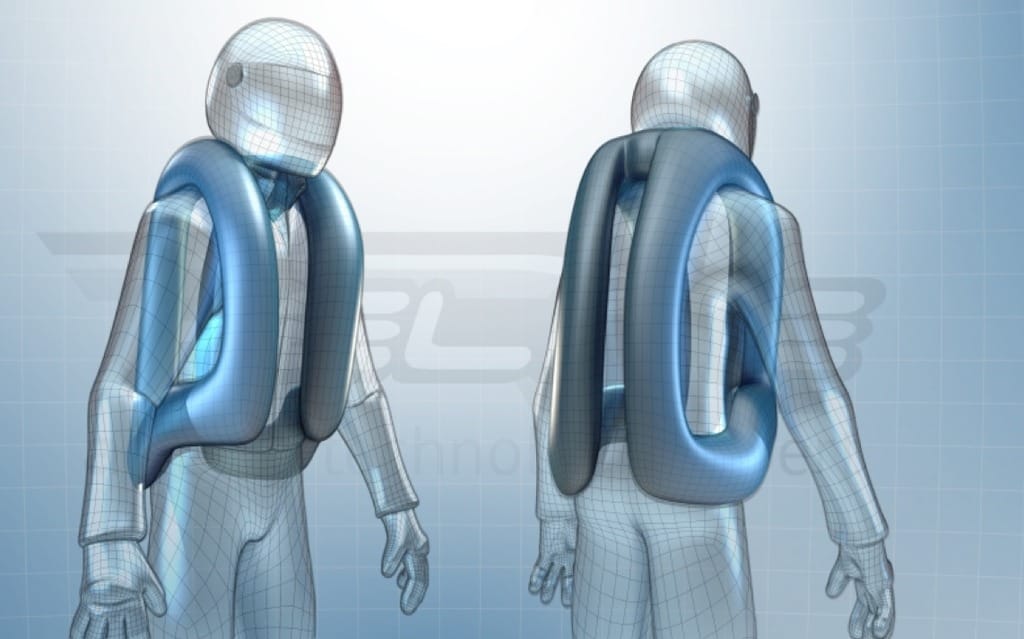Airing out the future of protective gear
If there’s anything that I gained from researching last month’s story on motorcycle armour it’s a newfound conviction that air bags are the future of motorcycling protection. Newfangled viscoelastic back protectors and CE2-approved hardshell thermoplastics may be huge advancements on the fragile foam that used to fill our jackets and racing suits, but nothing compares to a pressurized air bag for its ability to distribute and absorb the massive shock of falling off a motorcycle. And, since air bags won’t come to us — Honda, to much pomp and circumstance, unveiled its air bag-equipped Gold Wing some four years ago yet no other manufacturer has chosen to follow — we must go to the air bag.
Hence this month’s product review, Helite’s Vented Air Bag Jacket. Manufactured in France — the company’s first products were for ultralight pilots — it mates a vented Cordura jacket to Helite’s latest “Turtle” air bag technology. Helite does, in fact, sell the vest separately and there are other jackets — a longer, adventure style version and a retro leather item that wouldn’t look out of place on Triumph’s T100 Bonneville — but essentially they all use the same technology: a 60 cc CO2 cartridge activated by a landyard-like rip cord that inflates an air bag over the most vulnerable parts of your torso, shoulders, and neck.
Unlike the air-bag-equipped clothing from traditional motorcycle gear manufacturers — Alpinestars and Dainese are currently at the forefront of motorcycle air bag technology — the Helite air chamber isn’t formed into some convoluted shape. Instead, simplicity being the key for a small manufacturer, Helite’s air bag is essentially a long inflatable tube that runs up one side of your spine, over the shoulder, then down the front of your torso before looping around your side (just above the hip area) and returning back to the spine. Despite this comparatively simple design, it offers considerable protection for all your most vulnerable areas: read that last sentence again and you’ll realize that, once activated, Helite’s Turtle technology offers complete spinal coverage — from approximately your lower L4 lumbar to about as high as C3 — does a fine job of protecting your front rib cage, covers your easily-damaged kidney and liver and, for good measure, when inflated protects your clavicle et al from fracture as well as bracing against the bottom of your helmet minimizing neck and spinal cord injuries if you do land head first. Simple it may be, but it’s no less protective for it.
As to why Helite calls its technology “Turtle,” previous versions of the vest/jacket featured a Knox back protector under the air bag. The new version jettisons the CE Level 1 Knox, adds an SAS-Tec Level 2 item and places it over the air bag, like a turtle’s hard shell. The benefits are twofold. First, in a low-side get-off, you could actually remain with your bike, preventing the ripcord from activating the air bag. In that case, you still have a Level 2 viscoelastic back protector guarding your spine. More importantly, says Helite, is that by having the back protector over the air bag, it distributes the load between the two tubes — in case you missed the inference, both sides of your spine have a tube that goes over your shoulder, down your torso, etcetera, etcetera — thus doubling the amount of pressurized air absorbing and distributing the impact. And, it does all that, says Helite, in less than 1/10 of a second, more than quick enough to provide protection when you go flying off your motorcycle.
How well does it work? Since Helite doesn’t publish performance figures and I wasn’t willing to fall off a motorcycle, I did what any dedicated motojournalist in the pursuit of ingenium veritas would do: I got a volunteer — you’d be amazed at how many people stepped up — to smack me across the back with a baseball bat (with the air bag inflated, of course). As unscientific as that was, it did prove that, in practice, the Vented jacket’s protection does live up to Helite’s theory. While I could definitely feel the force being applied — Take it easy back there Steve! — there was no pain, the Turtle technology distributing the impact over the whole back area and then air pressure absorbing the blow. I have no idea how many kilo-Newtons of force — you’ll have to look up last month’s armour story for the explanation of armour testing — were being applied, but I was feeling none of them.
But, I suppose, having done so much research, I expected that. What was surprising was how good a jacket the Helite was otherwise. Tough Cordura 600 is used throughout the jacket, even tougher Superfabric on all the most abrasion-vulnerable points and the traditional elbow and shoulder amour is Level 2 rated. The only caveat to overall goodness is that the air bag does cover up some of the venting. The arms get a free flow of air; the torso not so much. The Helite won’t be as cool when the mercury hits 30 degrees as my Olympia Airglide, but then it does offer substantially more protection.
One last aspect of the Helite’s performance bears mentioning. Unlike its Dainese and Alpinestars counterparts, which use sophisticated electronics to trigger their air bags, as mentioned, Helite uses an old-fashioned rip cord which you attach to the frame of your motorcycle. Before testing it, I had two concerns, namely 1) that it would be inconvenient and b) that if I forgot to unplug it, I’d inadvertently trigger the air bag while getting off the bike. Two months of testing and I can tell that, firstly, it really isn’t all that inconvenient — especially measured against the protection offered — and most importantly, even though I have forgotten to untether myself, there have been no impromptu impressions of the Michelin Man. Helite’s contention that the 60 pounds of force required to pull the cord out of the jacket is more than you would generate from simply walking away from your bike still attached have proven completely accurate. Oh, and one last thing, Helite’s air bag is reusable: if it does go off, just deflate the air bag, replace the C02 cartridge, and continue on your merry way.
In the end, the Helite is well on its way to become my go-to jacket. It’s comfortable, vents reasonably well and has a fleeced, rainproof liner for inclement weather. Most importantly, I have never felt so protected as when I know I’m hooked up to a high-pressure air bag. Make no mistake, the future of motorcycle protective gear involves air bags and, with the Helite Vented jacket, you can have that future now.
The Helite Vented Air Bag jacket costs $950 and is available through Helite.com. A word of note, Helite’s sizing is a little smaller than traditional. You might want to order a size or two larger than normal. Consult the company’s online sizing guide: http://www.helitemoto.com/sizing/.
